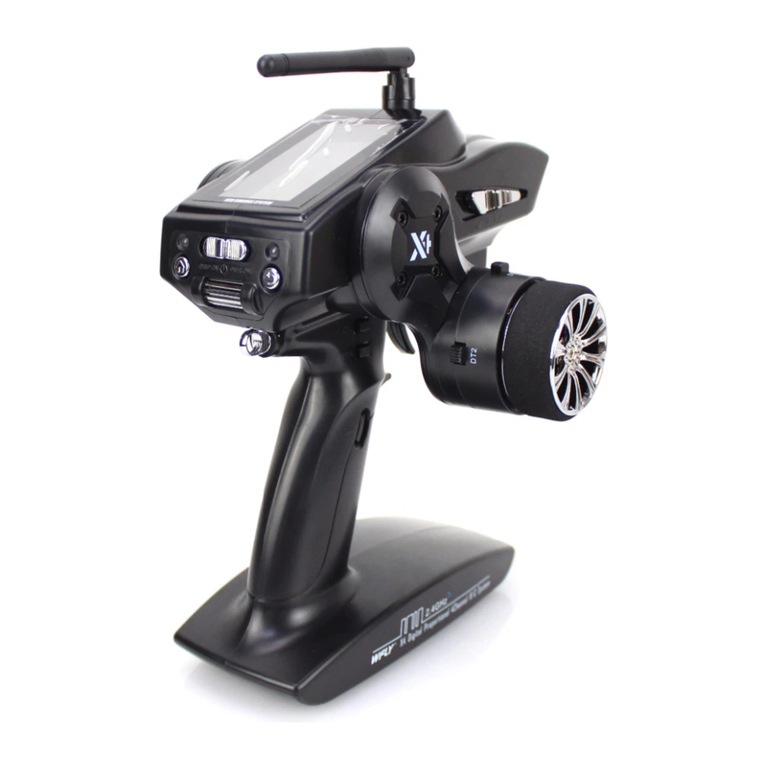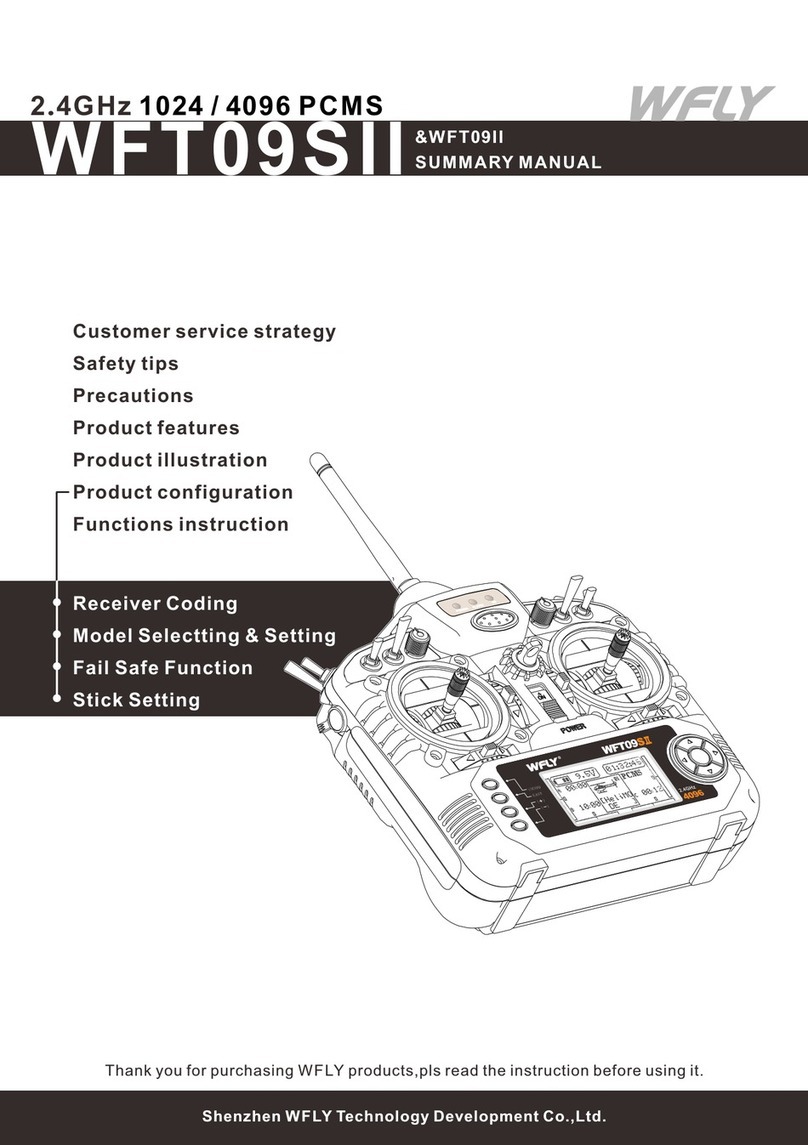
Safety Precautions
Flying Precautions
Symbols Definition
Prohibitions Mandatory
Disclaimer & Warning
User should be responsible for any consequences caused by using the product. WFLY shall not be liable
for any directly or indirectly damage, injury and any legal liability, User shall comply with all guidelines
including but not limited to this document.
Please follow the local laws and regulations for regular flight activities. Do not use this product to carry
out personal safety, property safety or other bad flight behaviors.
To ensure the safety of yourself and others, please observe the following precautions:
Beginners should pay particular attention to the following safety precautions! Please read carefully!
No fly in bad weather day such as rain, strong wind or at night, etc.
Be careful when flying near electric wires, high-rise buildings or communication facilities, as there may
be radio interference around.
No fly in airports and other places where fly is forbidden.
Charge the batteries! Check transmitter and receiver battery level and always recharge the batteries
before each flying session. A low battery will soon die potentially, causing loss of control and a crash. When
you begin your flying session, reset your ET08 built-in timer, and during the session, reset your ET08 built-
in timer, and during the session pay attention to the duration of usage.
Before flying, inspect the aircraft carefully, inspect whether the aircraft and transceiver system it's
normal. When flying, make the transmitter display to the initial interface, in case of mistaken parameter
change. After flight, turn off the receiver power before turn off the transmitter power, in case of any injury
caused by fail safe works.
Firstly turn off the receiver, Secondly turn off the transmitter.
More debugging, more testing, less loss, less damage!
Power on:
Transmitter and receiver low voltage may cause fail-safe danger!
Power off:
Note: The transmitter will display the warning interface, please pay attention to the transmitter
prompt! Improperly operation may cause accident injury to user.
No fly near high voltage wires, communication base stations, government secret zone or public places
where crowds gathered.
Firstly turn on the transmitter (ensuring the minimum throttle position), Secondly Turn on the receiver.
No fly when user is in poor health condition such as fatigue and drunkenness.
Power on and off sequency of transmitter and receiver!
Mandatory
Mandatory
06
Pay special attention to the safety information of the following symbols!
If without a proper operation,it may cause dangerous accident or seriously injury or
may even cause death.
If without a proper operation,it may cause dangerous accident or seriously injury or
may even cause death,and it may cause slight hurt or probability cause bodily injure!
If without a proper operation,it may cause less possibility to serious hurt,but it may
cause hurt or bodily injure.






























